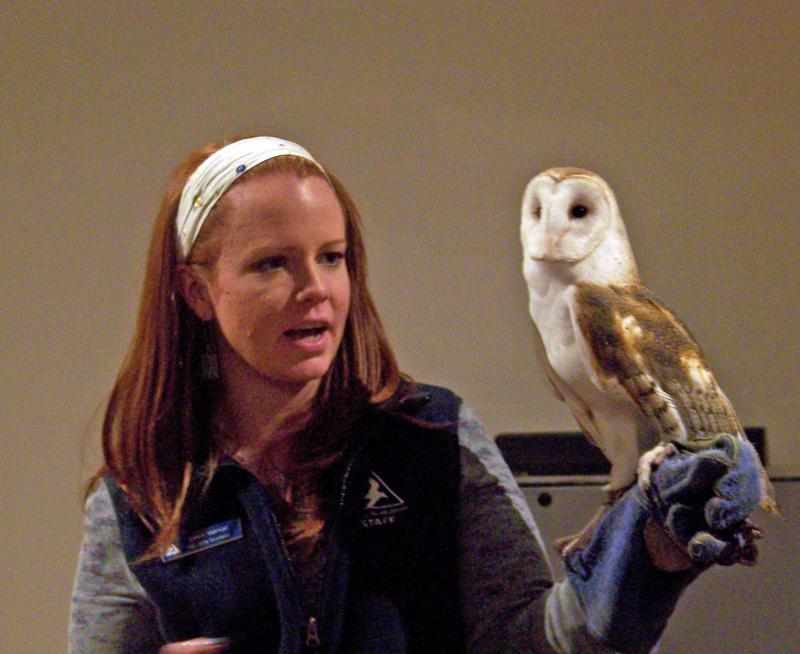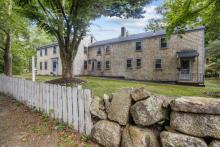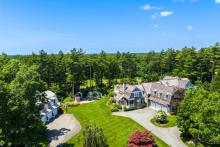Birds of prey swoop into Natural History Museum
Known for its otherworldly screech and white face, it’s no wonder a barn owl may be mistaken for something supernatural.
“There are a lot of myths about barn owls being ghosts or witches,” said Emily George, a teacher and naturalist with the Massachusetts Audubon Society.
On Friday, Feb. 7, George presented a birds of prey program at the Marion Natural History Museum. She brought a six-year old barn owl and a peregrine falcon.
Adults and children filled the museum, located on the second floor of the Elizabeth Taber Library, to catch a glimpse of the raptors.
George, who works at the Blue Hills Trailside Museum in Milton, discussed how animals come under the group’s care, and also revealed interesting facts about birds of prey in general.
George said the birds she brought cannot be released into the wild. The barn owl ended up in the society’s care when a farmer found it on the ground. With fisher cat tracks nearby, it appeared to have survived an attack. The bird is now “imprinted” and is more comfortable around people than other owls.
Among owls, she said the barn owl’s ability to hear is unmatched.
“It has the best hearing of all owls, which is really saying something,” George said. A barn owl can hear its prey’s heartbeat within a six-foot radius.
Barn owls were once common in the state. Due to habitat loss, they can only be found on Martha’s Vineyard and Nantucket. The owls require large open fields to hunt.
The falcon George brought had a nest in Boston, but crashed into an office building while on the hunt. In the 1970s, peregrine falcons were on the decline due the pesticide DDT, which is now banned. Since then, the birds have rebounded.














